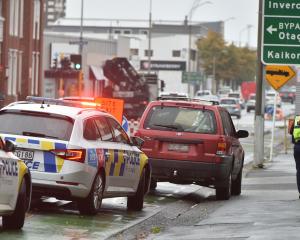Mr Douglas - the first and only Minister of Culture for the Black Panther movement - is the Elam International Artist in Residence at the University of Auckland.
He was in Dunedin for a presentation of his work spanning the turbulent period of United States history in the 1960s and 1970s.
Mr Douglas explained the thinking behind his images, many of which adorned The Black Panther newspaper during the civil rights movement and took aim at police, politicians and poverty in the United States, as well as conflicts from Vietnam to the Middle East.
Some of Mr Douglas' works used humour to underscore messages of solidarity and justice, while others were brutal in their directness.
Former US president Richard Nixon was shown in one image with a swastika on his forehead, standing in front of Nazi leader Adolf Hitler and under the title "class brothers".
Mr Douglas detailed the violence and fear of the period, but also the success of some of the Black Panther social programmes, including early-morning breakfasts cooked by party members for impoverished children to eat before school.
"We said children need to go to school not on an empty stomach. We were feeding hungry children all over the country. We were feeding more hungry children than the US Government," he said.
It appeared Mr Douglas had lost little of his revolutionary passion as he explained the thinking behind an image attacking private-sector involvement in the US penal system.
In the US, the system created an incentive for private companies to keep prisoners lining up to be locked up, in turn creating a profit motive for innocent people to be framed, he argued.
"It's about profit," he said, prompting a cry of "right on" from the audience.
Told by a member of the audience New Zealand's Government favoured some private-sector involvement in prisons, Mr Douglas was quick in his response.
"Well, you have got to do something about it," he said.












